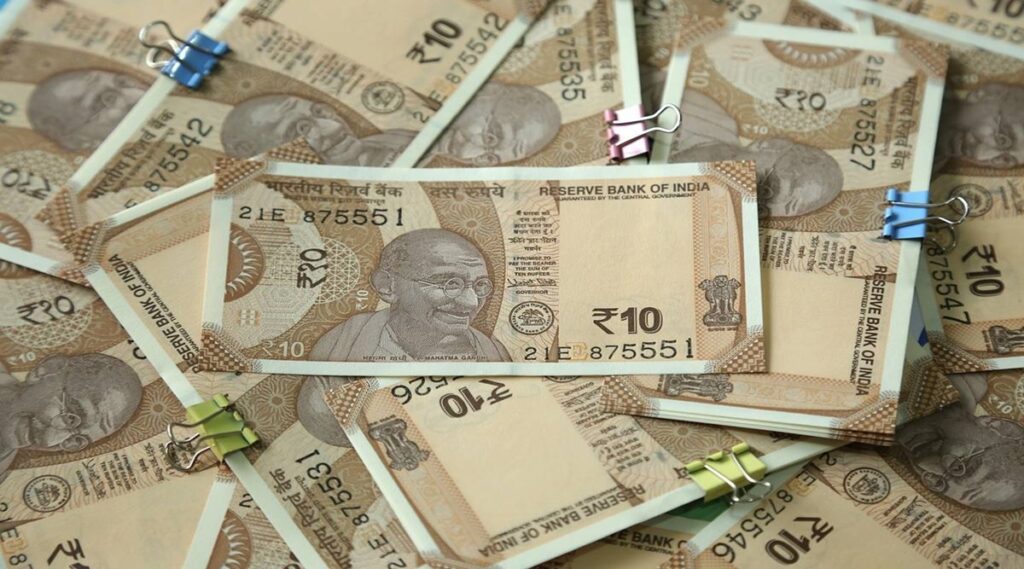The Reserve Bank of India (RBI) has put in place a mechanism under which the final settlement of export and import payments by Indian traders can be made in rupee. Besides helping curb demand for foreign exchange and, thereby, support the Indian currency, the move will also facilitate unhindered trade with sanctions-hit Russia and trouble-torn Sri Lanka. Last week, the RBI took a series of steps to ease forex inflows in an effort to stem the rupee’s fall.
“In order to promote growth of global trade with emphasis on exports from India and to support the increasing interest of global trading community in INR, it has been decided to put in place an additional arrangement for invoicing, payment and settlement of exports/imports in INR,” the RBI said in a circular on Monday. Trade experts, however, were sceptical about the interest in Indian rupee among major global buyers of Indian goods and services, except Russian firms, given the increased preference for dollar among global traders. The rupee, like most emerging market economy currencies, has seen sharp depreciation in recent weeks, impacted by high inflation, rising interest rates and capital outflows.
Rahul Bajoria, MD & chief India economist at Barclays, said though “incremental for now”, these measures would enable greater use of the rupee in foreign trade in the long term. “This step can be particularly useful for neighbouring countries, and also those countries willing to use the rupee as a base currency for trade diversification in their settlement rules,” he said. Currently, 60% of export/import payments by Indian firms are denominated in the US dollar, about 5-10% in rupee and the balance in other currencies, including the euro.
Even in cases where an Indian exporter receives the payments in rupee, the settlement at the sovereign level is done in dollars, with the exchange rate risk borne by the individual trader. Under the new mechanism, even the final settlement will be via the rupee. “This is a timely move as many countries are facing huge forex shortage in Africa and South America, and allowing export-import transactions through letters of credit only.
This will help our exporters and importers,” said Ajay Sahai, director-general at Federation of Indian Export Organisations. However, exporters are concerned if the tax refunds under various schemes – like duty drawback and RoDTEP – would be available to exporters using the new rupee payment mechanism. “We hope that government will clarify on exports benefits, which is currently granted only for exports payments received in foreign currency,” Sahai said.
Though a rupee-rouble mechanism to enable swift payment to local exporters supplying to Russia was considered earlier, this hasn’t worked out, amid increased concerns by the West. Though Russian exporters to India were keen to receive payments in rouble, given the way that country’s trade is disrupted, they are now willing to accept payments in rupee too. India feels that the new additional mechanism for payments in rupee being not specific to any country would circumvent the sanctions.
According to the RBI, the authorised dealer banks would require prior approval from its foreign exchange department for using the new payment mechanism. All exports and imports under this arrangement may be denominated and invoiced in rupee, with the exchange rate between the currencies of the two trading partner countries being market-determined. The settlement of trade transactions under this arrangement shall take place in rupee as per the procedure laid down.
For settlement of trade transactions with any country, a bank in India may open special rupee vostro account of correspondent banks of the partner trading country. Indian importers using this settlement route will make payment in rupee which shall be credited into the special vostro account of the correspondent bank of the partner country, against the invoices for the supply of goods or services from the overseas seller/supplier. Similarly, Indian exporters will be paid the export proceeds in rupee from the balances in the designated special vostro account of the correspondent bank of the partner country.
Indian exporters may also receive advance payment against exports from overseas importers in Indian rupees through the mechanism. For this, Indian banks shall ensure that available funds in these accounts are first used towards payment obligations arising out of already executed export orders/export payments in the pipeline. In order to ensure that the advance is released only as per the instructions of the overseas importer, the Indian bank maintaining the special vostro account of its correspondent bank shall, apart from the usual due-diligence measures, verify the claim of the exporter with the advice received from the correspondent bank before releasing the advance.
“The circular is aimed mainly at smoothening Russian trade payments. One thing to be noted here is that while paying for Indian exports, the other country’s bank will have to pay out of rupee balances in their special vostro accounts. In case the special vostro account is not pre-funded, the other country will have to buy rupees.
We’ll have to see how that works out,” said a senior banker. Set-off of export receivables against import payables in respect of the same overseas buyer and supplier with facility to make/receive payment of the balance of export receivables/import payables may be allowed through the rupee payment mechanism, subject to the conditions. The rupee depreciated by about 1.
7% against the dollar in the last one month. It closed at a new low of 79. 48 on Monday.
.
From: financialexpress
URL: https://www.financialexpress.com/market/new-mechanism-to-stem-domestic-currencys-fall-rbi-allows-exporters-to-settle-trade-in-rupee/2590683/
